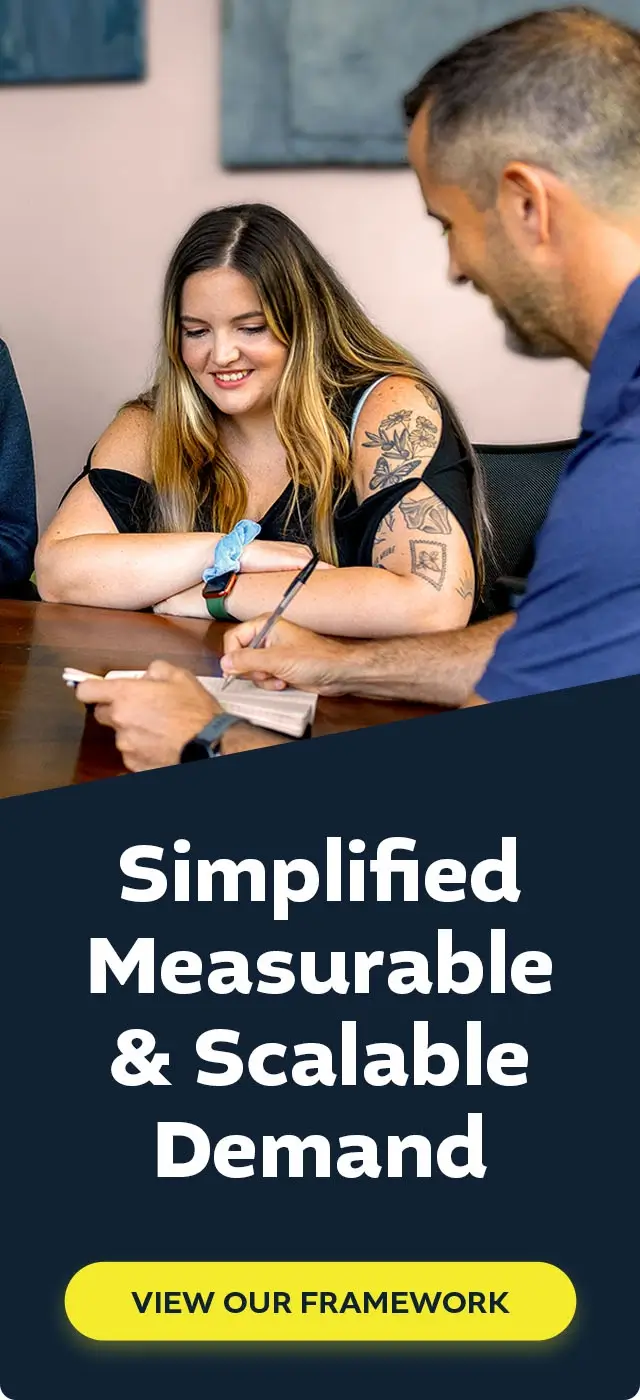It’s obvious that the business world is changing faster and faster every day. Because of this, buyer behaviors are changing across all industries, including the B2B space. You’re likely already aware that outbound sales is becoming more challenging, which makes inbound marketing for software companies more important than ever.
With that in mind, your SaaS business has two options: do it right or bust.
How Have Buyer Behaviors Changed?
Not too long ago, outbound sales was the norm. Cold calling prospects both online and offline was common, and often expected. Things have changed drastically in the last few years, however. Buyers, especially those in the B2B software space, want to truly know what they’re buying.
Education is key, and because buyers are more independent than ever before, they often want to lead their buying process. In fact, 96% of B2B buyers reported that B2B vendors could improve their content by curbing sales messages, according to Demand Gen Report’s 2019 Content Preferences Survey Report. In the same study, respondents said that they consume at LEAST 3-5 pieces of content before engaging with a sales rep despite 73% of respondents saying they have less time to devote to reading and research.
Considering today’s busy world, this is a significant percentage of people who want to know more about your business and what it can do for them before they even want to talk to your team. Leading prospects through the buying cycle with relevant, valuable content and allowing them to familiarize themselves with your brand and offering is becoming the norm. This is where inbound marketing wins.
Adapt or Die
Pardon the dramatics, but adaptability is truly one of the most important assets for modern businesses, especially those in the B2B software industry. With constantly changing privacy laws and public expectations, the digital landscape is preparing for a groundbreaking transformation.
Besides that, buyer behavior requires its own strategic shift. If your business or leadership is resistant to change, this is a quality you need to weed out ASAP if you want your business to flourish.
How to Do Marketing for Software Companies Right
If you’ve read this far, you’ve accepted that you need to do things right if you want to succeed. You need to adapt and develop an inbound marketing strategy, lay out a plan, and execute on it. Even then, there’s still more to be done. After execution, you’ll want to observe your performance, learn from it, optimize, and reiterate on your strategy. At OM, we call this a waterfall strategy, where we first determine our goals, then add the details step by step until we have a fully mapped out plan in place.
Developing a Strategy
When first developing your strategy, consider your goals:
Are you trying to increase lead volume? What steps can you take to move the needle here?
At this stage, you want to come up with some general strategies that will drive success. Some examples may include “create a content strategy that acknowledges and provides solutions to the pain points our customers feel” or “implement a paid campaign that resolves a problem we’re seeing in our business that is hindering our ability to reach our set goals.”
Planning for Success
After laying out your strategy, it’s time to get more granular and put a plan in place. Let’s use our pain point-focused content strategy from the last paragraph as an example. Your plan should encompass all of the tactics you will be using in relation to your strategy. In this case, you may first want to do some research with your team to see what pain points your customers are resolving with your software. Then, you can determine what kinds of content to serve, what topics to cover, how you will create them, and how you will distribute them.
Putting Your Plan in Motion
With your plan in place, all you have to do is start executing. I’m sure your team uses some sort of task management software, so be sure to get everything plugged in and assigned to the right people. Get buy-in from any stakeholders who have been out of the loop up to this point. And finally, make sure everything that needs to be done is done. Clear any bottlenecks, mitigate risk, and get sh*t done.
Observe, Learn, Optimize, and Reiterate
Allow your strategies to run for some time – enough to gather a significant amount of data. Are you meeting your goals? What is or isn’t working? Keep a document with your observations and note anything that you want to continue to monitor.
Take care not to be too reactive – early on you may not be seeing the results you’d been hoping to see, but you have to give your strategy time to perform. Once you have a significant pool of data, then you can begin taking action on your observations and performance. Optimize and reiterate on your strategy a little at a time, being careful not to over-optimize. Some things just take a little bit of time, especially if you have limits such as low traffic or a low budget.
To wrap things up, I want to remind you that things are changing pretty fast now, and will only continue to change. Being adaptable is a soft skill anyone in business, and especially in marketing, needs to have.
In its current state, B2B software sales and marketing should absolutely be implementing an inbound marketing strategy. If you’re not, it’s time to start doing marketing right.


